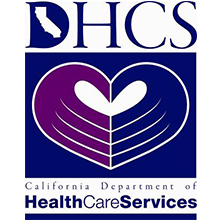Table of Contents
Toggle
Drug treatment programs do not follow a “one size fits all” philosophy. Specific groups or populations have specific needs that need to be met during treatment. This is especially true with women who struggle with dual diagnosis. In results published in the 2018 National Survey on Drug Use and Health, approximately 4.3 million women have mental illness and substance abuse issues. Additionally, the development of co-occurring disorders in women has unique roots that may not be adequately addressed in traditional dual diagnosis treatment.
Women who struggle with co-occurring disorders need to find a women’s dual diagnosis treatment center to receive the professional help and support needed to manage their condition. If you are looking for women’s dual diagnosis treatment in California, call Safe Harbor House toll-free today.
What is Dual Diagnosis Treatment?
Dual diagnosis treatment is a specialized treatment facility where mental health and substance abuse programs are offered in the same facility. Experienced psychiatrists, clinicians, medical staff, and addiction professionals work together to create individualized treatment plans for clients dealing with their co-occurring disorders. In dual diagnosis treatment, there are a wide variety of traditional and holistic therapies offered as well as an emphasis on medication management and aftercare. Dual diagnosis treatment emerged in the 1990s and is founded on the philosophy that people suffering from dual diagnosis need integrated care. Prior to the 1990s, mental health treatment and addiction treatment were considered separate. As a result, those experiencing dual diagnosis were directed to either a drug treatment program or a mental health program based on what was seen as the greater need as far as treatment. As a result, people underwent treatment programs that were insufficient to address all underlying issues that led to their dual diagnosis. The prognosis for dual diagnosis patients who didn’t receive specialized integrated treatment was poor.Is There a Difference Between Men’s and Women’s Dual Diagnosis Treatment?
When looking for dual diagnosis treatment in California, you may wonder if there are differences between men’s and women’s dual diagnosis programs. In men’s dual diagnosis treatment, there is an increased emphasis on individual therapy. This is due to the fact that men struggle with communicating on a more personal level. In addition to building healthy communication skills, men’s dual diagnosis treatment places emphasis on the following:- healthy regulation of emotions
- anger management
- controlling impulses
- Past sexual abuse
- Parenting issues
- Low self-esteem
- Loss of a parent or other loved one
The Benefits of Women’s Dual Diagnosis Treatment
When women seek dual diagnosis treatment, they will receive immense benefits from attending a gender-specific dual diagnosis treatment center. First and foremost, these facilities promote a safe and nurturing environment. Since sexual and physical abuse are common in women who have co-occurring disorders, they benefit more from group-centered support environments. This strong sense of safety is also beneficial if women are expecting when entering treatment or in need of childcare. Secondly, women’s dual diagnosis treatment features individualized programs that focus on women’s unique issues. These issues include low self-esteem and self-worth, past trauma, and parenting issues. These specialized programs emphasize therapies that address each woman’s needs, including:- Cognitive-behavioral therapy (CBT)
- Dialectical behavioral therapy (DBT)
- Experiential therapy
- Holistic approaches (yoga, acupuncture)



